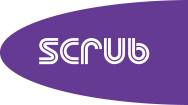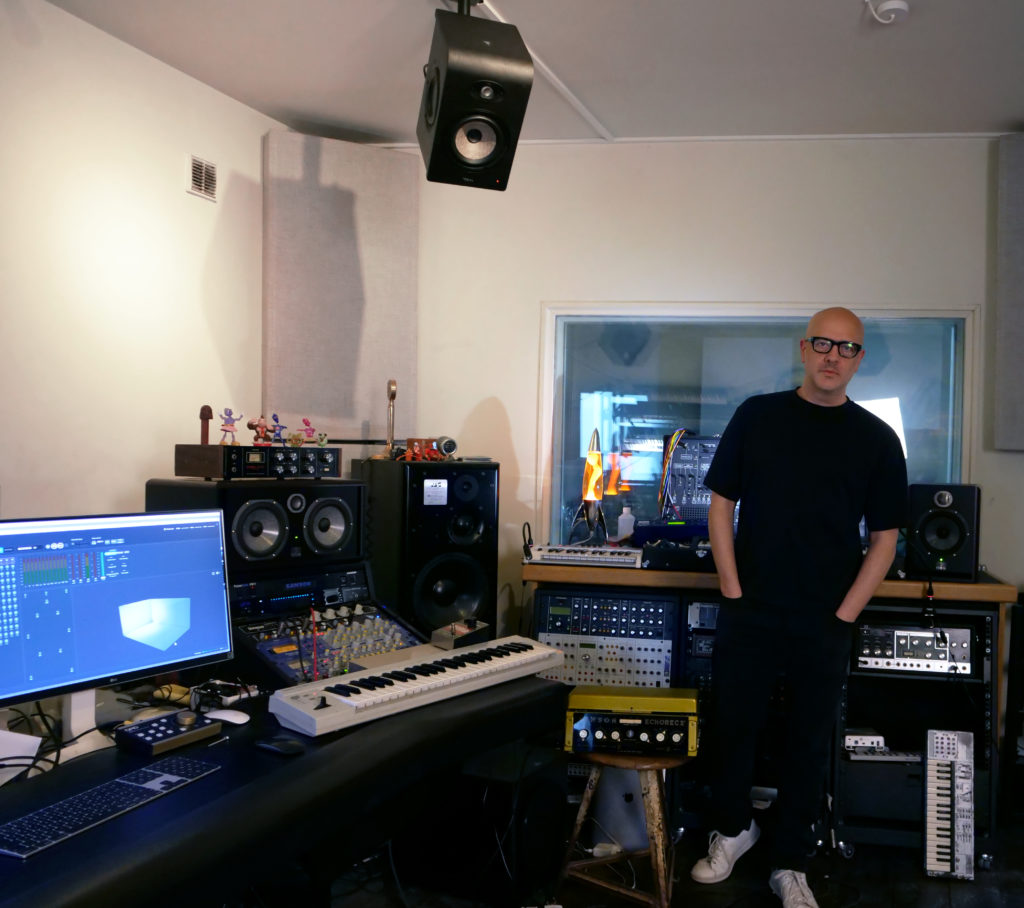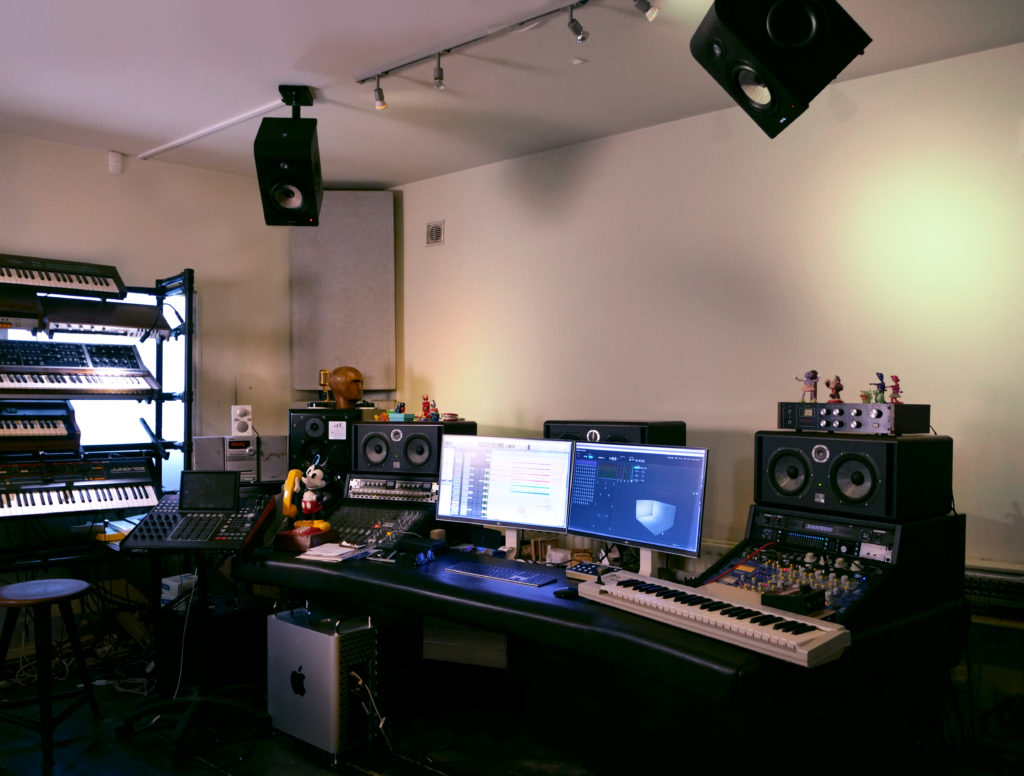HHB Communications recently had the opportunity to work with David Kosten as he upgraded his studio to Dolby Atmos. Kosten is known for a wide range of work that includes his Faultline project which has featured a mix of industrial noise, electronica, and classical instrumentation along with vocalists Chris Martin, Michael Stipe and The Flaming Lips. He is also an active producer and mixer, with credits that encompass Mercury Prize nominated Bat For Lashes and Everything Everything, Chinese superstar Shang Wenjie and albums by Enter Shikari, Marina and The Diamonds, Keane, and Steven Wilson. This year his work on Steven Wilson’s album “The Future Bites” received a 2022 Grammy nomination for Immersive Sound.
For Kosten it was hearing Steven Wilson’s album which he co-produced and mixed, at Dolby headquarters that that convinced him to upgrade his studio. A long-time customer of HHB Communications, Kosten enlisted HHB’s support in specifying, supplying, and installing the tools needed to upgrade his studio. Having decided on a Focal 7.1.4 monitoring system, HHB installed Twin6 BEs to manage the LCR, Solo6 BE for the sides and rears, Shape 65 overheads, and two Sub6 delivering the LFE. To ensure ultra-low-latency monitoring and speaker processing a Pro Tools | MTRX Studio was installed and made even more powerful with additional HDX card.
As a musician, as well as a mixer, Kosten had the unique ability to work with Dolby Atmos on his own projects. Kosten comments “from the moment HHB were testing out the new system with a new Faultline track, I knew this was a game changing move for me – there’s a piece featuring about twenty layered classical harps and hearing them surrounding me completely altered how the music felt – there was a deeper intimacy and connection with the individual sounds that I loved, instantly.”
Kosten like many engineers found that Dolby Atmos technology enabled him to work in a way that he’s always envisioned “I always imagine the music I’m working on existing in three dimensions, even when it’s been in stereo – and as anyone I’ve produced probably knows, I often describe the journey a song travels on in terms of the imaginary spaces it inhabits. to finally be able to actually position sound in such an astonishing way is heaven for me. It’s very hard to imagine going back to stereo only, after hearing the emotional impact total immersion in audio can create.”
Kosten had this to say about the difference in working in Dolby Atmos. “The most fun part of immersive mixing might be the giant haul of extra goosebumps from positioning layered voices all around the listener. And taking the time to really carve out space for instruments whilst making sure a song doesn’t just feel like a collection of sounds floating around you. I’m not so into automating sounds to fly around your head or extreme front to back panning for the hell of it particularly. In that sense it’s not that dissimilar to moving to stereo from mono way back when – just because you can doesn’t mean you should! I’m looking for a track to have the enhanced connection that immersive audio can give you – and discovering new ways to do it is always interesting.”
For those just starting out in immersive or interested in the format Kosten offered this bit of advice, “It’s still always about the song, the piece of music, the way a vocal connects, or a melody should be presented – so the approach to mixing and balancing remains close to how things have always been for me. However, in Atmos the potential emotional impact you’re able to provoke feels greater and more thrilling to me as a listener, so tailoring mix moves and decisions to a three dimensional space means room for new ideas – and there’s always tons to learn. For instance, figuring out what kind of frequencies and transients seem to respond best to height information – that’s a new tool to use!




